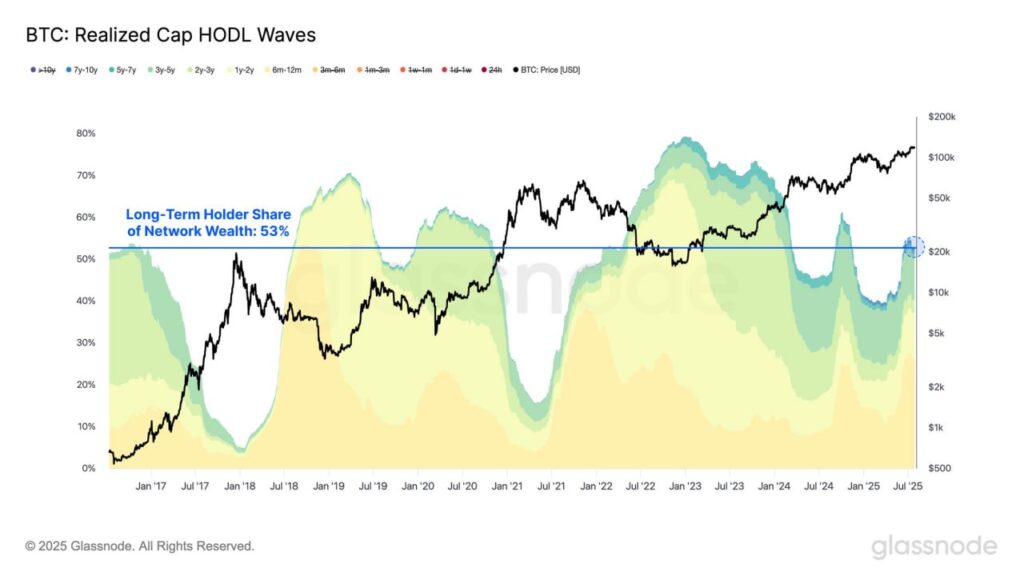Despite recent profit-taking and distribution, long-term Bitcoin holders defined as wallets holding BTC for 155 days or more still control 53% of the network’s realized cap, according to new data from Glassnode.
The chart shows that long-term investor dominance remains historically elevated, even as prices surged throughout 2024 and 2025. This resilience highlights a market dynamic where conviction outweighs short-term volatility, reinforcing that a significant share of Bitcoin wealth remains tightly held.
Glassnode’s analysis tracks Realized Cap HODL Waves, a model that segments BTC by the age of coins moved. Warmer colors (reds and yellows) represent recently moved BTC, while cooler tones (blues and greens) represent older, dormant supply. The current data shows a strong presence of colder shades particularly in the 1-2 year and 2-3 year bands indicating that long-term accumulation is still intact.
However, the fact that long-term holders remain the dominant force also presents a structural risk: as prices rise further, some of these dormant coins could begin to move. Historically, large waves of distribution occur when BTC breaks into new all-time highs, as holders capitalize on gains.
In this context, any meaningful breakout would require strong sustained demand to absorb potential long-term holder selling pressure. Without it, sharp pullbacks could follow. This is particularly relevant now that BTC is trading above $110,000 a psychological and technical zone that could trigger sell-side liquidity from long-inactive wallets.
Institutional buyers, ETF flows and broader adoption trends will therefore play a key role in maintaining upward momentum. As of now, the 53% share of realized cap held by long-term holders continues to serve as a backbone of market stability but could quickly become a source of volatility if sentiment shifts.

source: Glassnode, Coinmetrics, CryptoQuant







